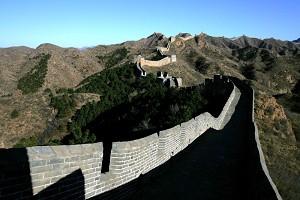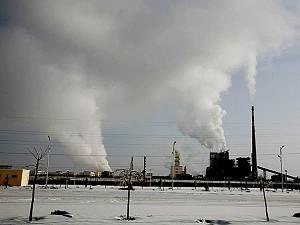The Xiluodu Hydropower Station project on one of the Yangtze River’s important branches, the Jinsha River, is now under construction again. Construction was previously halted by China’s State Environment Protection Administration (SEPA) for violations. VOA quoted a political observer as saying, “The project re-launch contains unusual political messages, given that the halt had been endorsed by Chinese Premier Wen Jiabao.”
According to VOA, when power station construction is halted, it generally involves present and former officials in China’s electric power management system, which is closely related to the former premier Li Peng. Overseas observers believe that the halt of the project involves not only environmental factors, but also power struggles within the Chinese Communist Party.
Construction of the Xiluodu Hydropower Station began again on December 26. It is reportedly the second largest hydropower station in China and the third largest in the world.
SEPA stopped the construction of thirty large electric power plants in January 2005, stating that these plants violated the environment impact assessment law. The total investment involved 117.9 billion yuan (US$14.25 billion), of which more than one-third, some five billion US dollars, went to the Xiluodu Hydropower Station.
Wen Jiabao was reported as supporting SEPA’s decision. Fifty-six environmental protection NGOs in China, such as Friends of Nature and Global Village in Beijing, also supported the halt.
According to reports, China’s electric power system is an extremely corrupt arena. One of the most notable cases is that of former general manager of the National Electric Power Corporation, Mr. Gao Yan. Li Peng’s son, Li Xiaopeng, was once the first deputy manager of the National Electric Power Corporation. It is believed that Gao Yan gained his position through Li Peng’s power.
A financial audit of the former management of the National Electric Power Corporation by the State Auditing Administration discovered that mistakes in the decision-making process had caused a loss of 7.8 billion yuan (approximately US$966.5 million) of state assets. Gao Yan couldn’t deny his responsibilities for this loss and he fled in September 2002, fearing retribution for his crime. His whereabouts are currently unknown.
Due to corrupt local officials’ embezzlement of the relocation fee for residents in the dam areas, the construction of China’s large hydroelectric power stations has resulted in a large number of protests. At the end of October 2005, hundreds of thousands of people in Hanyuan County, Sichuan Province, protested against the construction of a hydroelectric power station which would flood Hanyuan County and the nearby towns and villages, affecting over 2933 hectares of farmland and more than 90,000 people.
In addition to all this, the China Huaneng Group, led by Li Xiaopeng, proposed to construct a hydroelectric power station at the Tiger Leaping Gorge on the Jinsha River in Yunnan Province. After construction, the most magnificent natural sights of the Tiger Leaping Gorge will disappear. Chinese intellectual communities, environmentalists and local peasants have been strongly opposing the proposal ever since it was released.
According to the report, the Xiluodu Hydroelectric power Station is larger and involves more investment than the proposed power station at Tiger Leaping Gorge. Its impact on the environment and local farmers will be correspondingly larger.
Analysts believe that there are probably more complicated factors behind the communist regime’s decision to proceed with construction at Xiluodu, despite the huge environmental impact.




